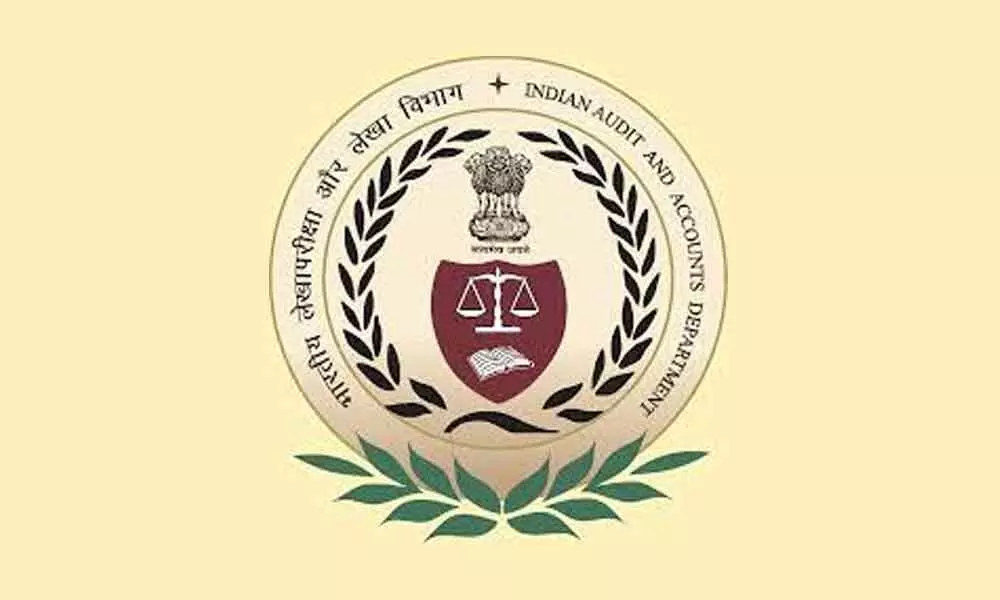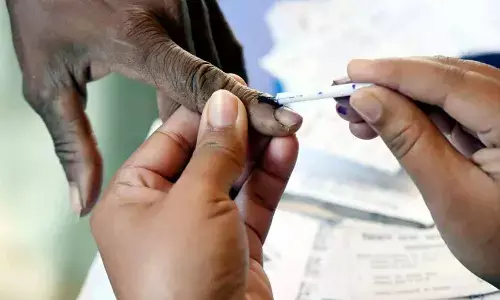CAG report holds a mirror on state of affairs in TS

CAG report holds a mirror on state of affairs in TS
The Comptroller and Auditor General, India's supreme audit agency report of 2020 on Telangana State government is in the public domain. The report reveals certain indicators of financial mismanagement and opaqueness in the State budget.
The CAG report primarily expressed concerned over the diversion of funds by the State government. The Hyderabad Metropolitan Development Authority (HMDA) utilised an amount of Rs 29.15 crore for works undertaken by Roads and Building Department towards creation of additional facilities in Pragathi Bhavan out of the loans given to HMDA.
Using the loan amount for the renovation works at Pragathi Bhavan which is the official residence of Chief Minister clearly shows the questionable approach of the policy makers. However, HMDA did not offer its remarks as to how the works relating to additional facilities in Pragathi Bhavan came under the purview of developmental activities for which loan amounts were approved by the Legislature.
According to the report, the State Government has spent Rs1,01,877 crore on capital projects during the years 2014-19. Within the capital projects, the major share of the Capital Expenditure was on Irrigation and Flood Control.
There have been inordinate delays in completion of projects and this has adversely affected the quality of the expenditure and also deprived the State of the intended benefits and economic growth.
Out of 26 ongoing projects, 20 projects were delayed with delays ranging from three months to 11 years and led to escalation of projected cost to Rs 1,87,848 crore. An amount of Rs 1,00,494 crore was already spent on these incomplete projects so far. The State Government did not disclose the financial results of any of the Irrigation projects.
Today, the outstanding public debt of Telangana State is Rs 1,65,164 crore, which is been increased by 16 per cent in 2018-19. Appallingly, this is slightly higher pace than growth of GSDP. The CAG report has reportedly found that the interest payments of the Telangana State are increasingly consuming revenue receipts.
Interest payments relative to revenue receipts were much higher at 12.41 per cent against the target of 8.37 per cent fixed by XIV Finance Commission. The maturity profile of outstanding public debt as of March 2019 showed that 46 per cent which is Rs 76,262 crore. The total outstanding public debt need to be repaid over the next seven years. The revenue generating resources are very negligible to repay the public debt.
Interestingly, the CAG has observed that the excess expenditure of Rs 29,133.69 crore was incurred by the State government. A total expenditure of Rs 3,507.17 crore was incurred at sub-head level without any budget provision in 34 cases. It was found that the persistent excess expenditure occurred in fiscal administration, planning, surveys and statistics and home administration grants.
This is in violation of Article 204 of the Constitution which provides that no money shall be withdrawn from the Consolidated Fund except under appropriation by law by the State legislature. This vitiates the system of budgetary and financial control and encourages financial indiscipline in management of public resources.
The Fiscal Responsibility and Budget Management (FRBM) Act, 2005 places an onus on the State Government to monitor and control the Fiscal Deficit. It also requires the State Government to make disclosures and statements under Section 10 of FRBM Act, 2005 together with Rule 6 of Fiscal Responsibility and Budget Management Rules, 2006.
The State government, however, did not make the following four out of ten disclosures required to be made: Statement of Assets, claims and commitments made by the government on revenue demands raised but not realised, liability in respect of major works and contracts, committed liabilities in respect of land acquisition charges and claims on State government in respect of unpaid bills on works and supplies, details of number of employees in Government, public sector and aided institutions and related salaries and pensions in the forms prescribed under FRBM legislation.
A comparison of fiscal priority of Telangana government with other General Category States revealed that Telangana focused more on development expenditure and capital expenditure. The focus of government on education and health was comparatively lesser across the years.
Further, the State government did not disclose financial results of any of the Irrigation projects. As a result, there was no proper assurance of returns from the heavy public investments in Irrigation and Flood control.
The Kaleshwaram Irrigation Project was implemented by Irrigation and Command Area Development department through a Special Purpose Vehicle, viz., Kaleshwaram Irrigation Project Corporation Limited (KIPCL). The Detailed Project Report (DPR) of Kaleshwaram Project mentioned that the project would hardly generate any revenues as irrigation water was being provided at a very nominal water charges since the command area lies in the drought prone districts of Telangana.
Hence, no analysis of the revenues was made in the DPR since there were no proposals for imposing water charges. It was observed in audit that while providing guarantees of Rs 27,990 crore to KIPCL for obtaining loans from various Banks, the Irrigation Department stipulated a condition that KIPCL shall undertake to repay the loans through revenue accruals from the project or project revenues.
In view of the mention in the DPR that there might be hardly any revenues from the Project, there is a risk that the Guarantee given by the State Government to KIPCL turns out to be an off-budget borrowing.
The above indicates that the State government provided guarantees to the organisations without ensuring financial accountability through which financial performance could be assessed. Providing Guarantees without proper risk evaluation assumes importance in the background that all the Guarantees given by the government were categorised as 100 per cent risk weighted as per the Statement of Fiscal Policy presented to the Legislatures.
The content of the CAG report clearly outlays the discreet approach of the State government and also reveals the fact that the state treasury is under excessive stress. The structural imbalances in the state economy need to be redress in order to build "Bangaru Telangana"
(The author is post-doctoral scholar in Political Science, University of Delhi)








